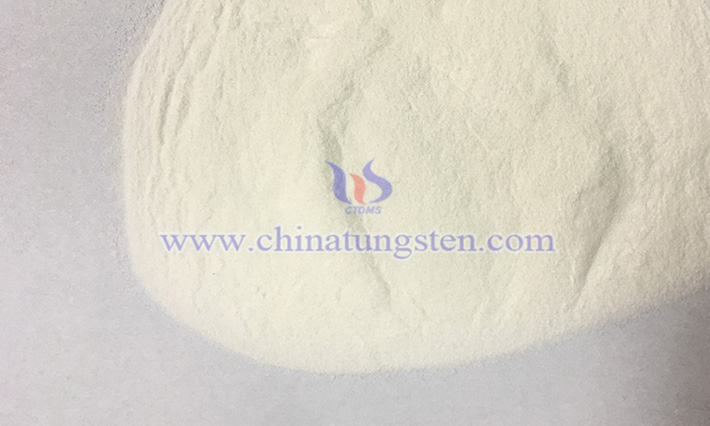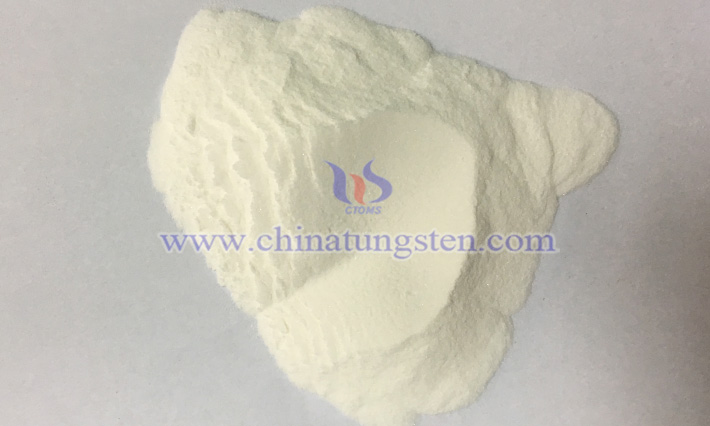Ammonium Metatungstate: The "Silent Powerhouse" in Catalysis
- Details
- Category: Tungsten Information
- Published on Tuesday, 03 June 2025 13:51
In the fascinating world of chemistry, Ammonium Metatungstate (AMT), produced by CTIA GROUP LTD, shines as a subtle yet brilliant star with its unique "personality." It is a compound formed by the tight bonding of ammonium cations and metatungstate anions, with the molecular formula H28N6O41W12. Beyond its excellent solubility and thermochemical stability, AMT also boasts remarkable catalytic properties.
CTIA GROUP LTD's Ammonium Metatungstate stands out in the catalytic field due to its distinctive intrinsic properties. From a chemical reactivity perspective, AMT exhibits mild acidity. In aqueous solutions, the ammonium ions undergo hydrolysis, rendering the solution acidic. This acidic environment acts as a "key" that unlocks the door to numerous chemical reactions requiring an acidic medium. For instance, in certain organic synthesis reactions, AMT’s acidity promotes the activation of reactant molecules, lowering the activation energy and enabling smoother, more efficient reactions.
From a microstructural viewpoint, AMT features a unique pore structure, resembling "micro-reaction chambers" that provide specific reaction spaces for molecules. These pores increase AMT’s specific surface area, allowing more reactant molecules to interact with the catalyst, thus enhancing reaction probability. Additionally, the size and shape of the pores selectively filter reactant molecules, permitting only those with suitable dimensions to enter and participate in reactions. This selectivity ensures precise generation of target products, minimizes side reactions, and improves reaction efficiency and product purity.

I. Factors Influencing AMT’s Catalytic Activity
While CTIA GROUP LTD’s Ammonium Metatungstate holds great potential as an excellent catalyst, its catalytic activity is not static and is influenced by multiple factors, akin to a finely orchestrated chemical symphony where various elements interplay to determine the catalytic outcome.
Loading Amount: The amount of AMT loaded onto a carrier significantly affects its catalytic activity. Within a certain range, increasing the AMT loading enhances the number of active sites on the catalyst surface, providing a larger "stage" for reactions and allowing more reactant molecules to interact with AMT, thus boosting catalytic activity. However, excessive loading can lead to agglomeration on the carrier surface, similar to how overcrowding hinders movement. This causes active sites to block each other, reducing their effectiveness and lowering catalytic activity.
Preparation Method: The preparation method profoundly impacts AMT’s catalytic performance by influencing its microstructure and physicochemical properties. For example, the commonly used impregnation method involves soaking the carrier in an AMT-containing solution, allowing AMT to adsorb onto the carrier surface. This method ensures good dispersion of AMT but results in relatively weak interactions with the carrier. In contrast, the acidolysis-alcoholysis process, based on the polymerization of hydrated acid radicals and tungstate anions in the presence of ammonium ions, produces AMT with high activity, selectivity, long service life, good water solubility, uniform distribution of active components, and a large specific surface area.

Reaction Conditions: Temperature is a critical variable affecting AMT’s catalytic activity. Generally, higher temperatures accelerate reaction rates by increasing the energy of reactant molecules, enabling more molecules to surpass the activation energy barrier. However, excessively high temperatures may alter AMT’s structure or even deactivate it, much like high temperatures denature proteins.
Reactant Concentration: Within a certain range, increasing reactant concentration enhances reaction rates by allowing more molecules to interact with AMT’s active sites. However, overly high concentrations can overcrowd the reaction system, intensifying intermolecular interactions and hindering reaction progress, potentially triggering side reactions and reducing product selectivity.

II. AMT’s Remarkable Applications
Petrochemical Industry
In the vast petrochemical industry, petroleum cracking is a pivotal process, akin to a "magic show" that transforms complex long-chain hydrocarbons into essential fuels like gasoline and diesel. AMT plays a crucial role as a "magician’s assistant" in this process. Its acidic aqueous solution creates an optimal acidic environment, lowering the activation energy barrier for long-chain hydrocarbons, much like lowering a high-jump bar for athletes. At the microscopic level, AMT’s acidic sites act as "attack points," weakening carbon-carbon and carbon-hydrogen bonds in hydrocarbons, facilitating their cleavage and enabling efficient cracking.

Organic Synthesis
In the realm of organic synthesis, AMT demonstrates extraordinary "magic" as a key catalyst in producing compounds like acrylonitrile and butadiene.
Acrylonitrile: A vital raw material for producing polyacrylamide and polyacrylonitrile, acrylonitrile is synthesized via the ammoxidation of propylene, where AMT plays a critical catalytic role. Its acidic environment facilitates the reaction of propylene, ammonia, and oxygen. AMT’s acidic sites adsorb propylene molecules, altering their electron cloud distribution to enhance reactivity, enabling efficient production of acrylonitrile under optimal conditions.
Butadiene: A key monomer for synthetic rubber and polyurethane, butadiene’s production also benefits from AMT’s catalysis. As a critical component of the catalyst system, AMT enhances reaction efficiency and yield.
Waste Gas Treatment
With growing environmental awareness, waste gas treatment has become a global focus, and AMT plays a vital role in producing denitrification catalysts for air pollution control. In industries like coal-fired power plants, emissions contain sulfur and nitrogen pollutants that harm the environment and human health. AMT-based denitrification catalysts, typically supported on titanium dioxide, effectively adsorb and convert these pollutants into harmless substances through complex chemical reactions. AMT’s unique structure enables strong interactions with nitrogen oxides and sulfur dioxide, making it a key component in high-performance denitrification catalysts.
- Chinatungsten Online: ammonium-metatungstate.com
- CTIA GROUP LTD: en.ctia.group
- Tungsten News & Price: www.ctia.com.cn
- Molybdenum News & Price: news.molybdenum.com.cn
- Tel.: 86 592 5129696; Email: sales@chinatungsten.com



 sales@chinatungsten.com
sales@chinatungsten.com